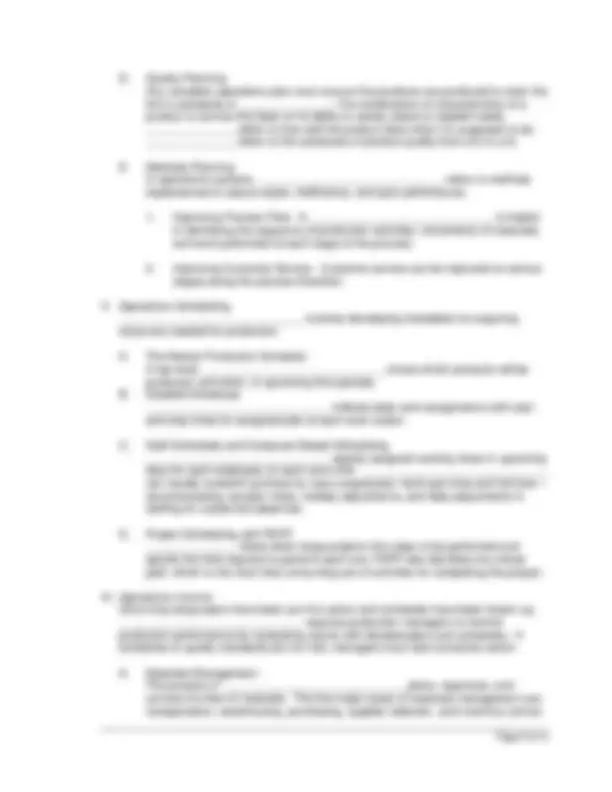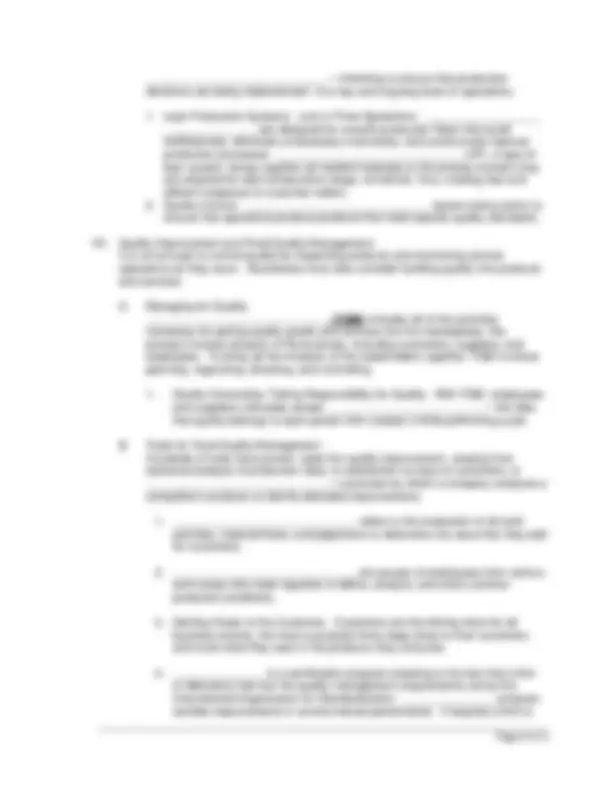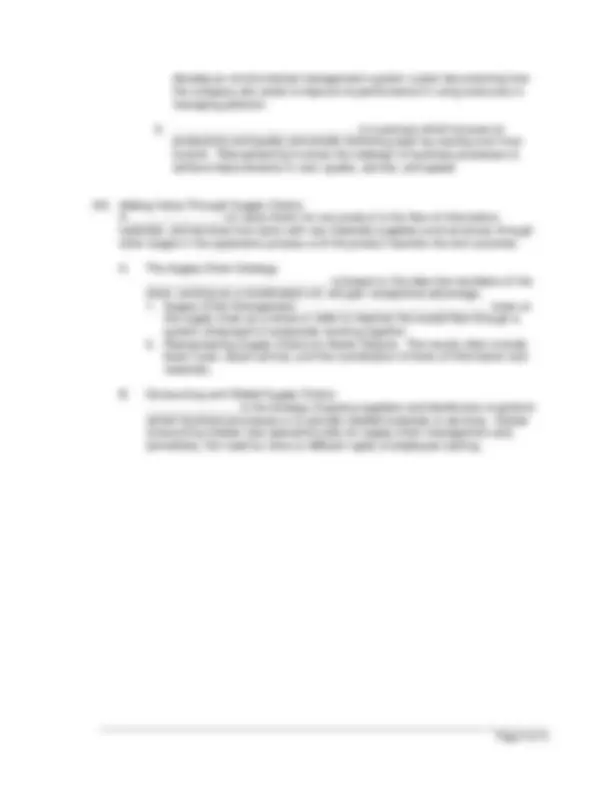





Study with the several resources on Docsity

Earn points by helping other students or get them with a premium plan


Prepare for your exams
Study with the several resources on Docsity

Earn points to download
Earn points by helping other students or get them with a premium plan
Community
Ask the community for help and clear up your study doubts
Discover the best universities in your country according to Docsity users
Free resources
Download our free guides on studying techniques, anxiety management strategies, and thesis advice from Docsity tutors
An overview of production management, focusing on the creation of value through operations. It discusses the differences between service and goods manufacturing, the role of production management in creating value for customers, and the challenges of service operations. It also covers various production strategies and operations planning.
Typology: Study notes
1 / 5

This page cannot be seen from the preview
Don't miss anything!




I. What Does “Operations” Mean Today? _______________________ provide tangible and intangible services; firms that make tangible products are engaged in _________________________ (or goods production). The term _______________ (or production) refers to all activities involved in making products—goods and services—for customers.
II. Creating Value Through Operations Both services and goods provide consumers with _______________, which is the ability of a product to satisfy a human want. _______________ is created merely through transforming raw materials into finished goods. _______________is created when marketers make products available when consumers want them; _____________ is created when products are made available where they are convenient for consumers. ______________________________ (production management) is the systematic direction and control of the processes that transform resources into finished services and goods that create value for and provide benefit to customers. _______________ _______________ (or production managers) are responsible for ensuring that operations processes create what customers need and want.
A. Differences Between Service and Goods Manufacturing Operations Whereas goods are produced, services are performed. Four aspects of service operations can make such operations more complicated than simple goods production.
B. Operations Processes An ______________________________ is a set of methods and technologies used in the production of goods and services.
Revised: 9/24/
III. Business Strategy as the Driver of Operations Companies go about selecting the kind of production that is best for their company based on the firm’s larger business strategy.
A. The Many Faces of Production Operations Every company identifies a strategy that it can use for winning customer orders; such strategies often include quality, lower prices, flexibility, and dependability.
IV. Operations Planning Managers from many departments contribute to the firm’s decisions about operations management; this is a process of logical steps upon which the success of the firm depends. The overall business plan guides operations planning, as do qualitative and quantitative forecasts.
A. Capacity Planning The amount of a product that a company can produce under normal working conditions is its _______________. A firm’s capacity depends on how many people it employs and the number and size of its facilities.
B. Location Planning Facility location affects production costs and flexibility. Depending on the site of its facility, a company may either be capable of producing a low-cost product or may find itself at an extreme cost disadvantage.
C. Layout Planning _______________determines whether firms can respond quickly and efficiently to customer requests for additional or different products or finds itself unable to match competitors’ speed and convenience.
______________________________—checking to ensure that production decisions are being implemented—is a key and ongoing facet of operations.
VII. Quality Improvement and Total Quality Management It is not enough to control quality by inspecting products and monitoring service operations as they occur. Businesses must also consider building quality into products and services.
A. Managing for Quality ______________________________ (TQM) includes all of the activities necessary for getting quality goods and services into the marketplace; this process involves all parts of the business, including customers, suppliers, and employees. To bring all the interests of the stakeholders together, TQM involves planning, organizing, directing, and controlling.
B. Tools for Total Quality Management Hundreds of tools have proven useful for quality improvement, ranging from statistical analysis of production data, to satisfaction surveys of customers, to ______________________________—a process by which a company analyzes a competitor's products to identify desirable improvements.
develop an environmental management system: a plan documenting how the company ahs acted to improve its performance in using resources in managing pollution.
VIII. Adding Value Through Supply Chains A _______________ (or value chain) for any product is the flow of information, materials, and services that starts with raw-materials suppliers and continues through other stages in the operations process until the product reaches the end customer.
A. The Supply Chain Strategy ______________________________ is based on the idea that members of the chain, working as a coordinated unit, will gain competitive advantage.
B. Outsourcing and Global Supply Chains _______________ is the strategy of paying suppliers and distributors to perform certain business processes or to provide needed materials or services. Global outsourcing creates new operations jobs for supply chain management and, sometimes, the need for more or different types of employee training.